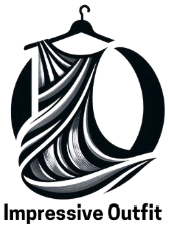In a world where trends change faster than the seasons, maintaining your signature style while staying relevant can feel like walking a tightrope. Whether you’re a fashion designer, content creator, or brand strategist, the pressure to adapt to new trends without losing your unique voice is real. This guide reveals actionable strategies to harmonize trend incorporation with authentic self-expression, ensuring your work remains fresh yet unmistakably you.

1. Understand Your Core Style Elements
Before embracing trends, dissect what makes your style unique. Your signature aesthetic is built on foundational elements like color preferences, design motifs, or communication tone. For instance, if your brand thrives on minimalist photography, that’s a non-negotiable element to preserve.
Conduct a style audit: Analyze past projects to identify recurring themes. Note which elements received the most positive feedback. This creates a “style blueprint” to reference when evaluating trends.
“Your style is your visual handwriting – messy attempts to copy others only create forgery.” – Lucia Pham, Creative Director
Pro Tip
Create a mood board of your best work to visually map your core style DNA.
2. Practice Selective Trend Adoption
Not every trend deserves a spot in your repertoire. Use the 3-Filter Test:
- Relevance: Does it align with your audience’s interests?
- Longevity: Will this trend outlast a season?
- Adaptability: Can you remix it to fit your aesthetic?
For example, if bold typography trends clash with your subtle branding, adapt by using trending fonts sparingly in social media graphics rather than core materials.
| Core Style Element | Trend Consideration |
|---|---|
| Neutral color palette | Add trending accent colors as 10% highlights |
| Long-form storytelling | Incorporate trending short video recaps |
3. Master the Art of Trend Adaptation
Transform trends into style extensions through creative reinterpretation. When neon colors dominated 2023, luxury brand Hermès incorporated them as subtle stitching details rather than full garments. This maintained their sophisticated identity while nodding to the trend.
Adaptation techniques:
- Scale adjustment: Use trending elements in smaller proportions
- Material translation: Apply digital trends to physical mediums (or vice versa)
4. Maintain Visual Consistency Through Anchors
Establish unchanging “style anchors” that remain consistent regardless of trends. These could be:
- A signature color used in every project
- Consistent typography hierarchy
- Recurring compositional techniques
Instagram influencer @MinimalistBaker maintains her style through consistent food styling and natural lighting, even while experimenting with trending recipe formats.
5. Balance Evolution with Revolution
Style evolution should feel natural, not abrupt. Follow the 70/30 Rule:
- 70% signature elements
- 30% trend experimentation
When Apple introduced colorful iMacs after years of neutral tech, they retained their sleek design language while adding playful hues – a masterclass in evolutionary change.
Pro Tip
Track trend lifecycles using tools like Google Trends to anticipate adoption windows.
6. Leverage Audience Feedback Strategically
Use analytics to gauge trend success without compromising style:
- A/B test trend implementations
- Monitor engagement metrics on experimental content
- Conduct quarterly audience surveys
Fashion retailer Everlane maintains its transparent pricing ethos while incorporating sustainable material trends validated by customer polls.
7. Protect Your Signature Elements
Identify style components that should never change. For National Geographic, their iconic yellow border remains untouched across digital and print formats. Create a “Style Constitution” listing protected elements:
- Primary brand colors
- Core messaging pillars
- Signature visual motifs
8. Develop a Trend Forecasting System
Stay ahead with a personalized trend radar:
| Timeframe | Focus Area |
|---|---|
| 6 months ahead | Monitor emerging trends |
| 3 months ahead | Test adaptations |
| Current | Implement refined trends |
Use tools like Pantone Color Institute and WGSN for professional trend insights.
9. Learn from Style Chameleons
Analyze masters of trend adaptation:
- Rihanna’s Fenty: Merges streetwear trends with luxury finishes
- Airbnb: Balances local design trends with global UX consistency
“The key is to make trends work for you, not the other way around.” – Marcus Wong, Brand Strategist
10. Build a Flexible Style Framework
Create an adaptable style system:
- Core elements (permanent)
- Seasonal elements (trend-based)
- Experimental space (10% rule)
Interior designer Joanna Gaines maintains her farmhouse aesthetic while incorporating modern metallic accents through this structured approach.
Final Thoughts: Style as Living Art
Your signature style isn’t a museum piece – it’s a living ecosystem that grows through thoughtful trend integration. By establishing strong foundations, implementing strategic filters, and maintaining authentic self-expression, you can ride the trend wave without being swept away. Remember: Trends come and go, but true style is forever evolving while staying rooted in what makes it uniquely yours.
